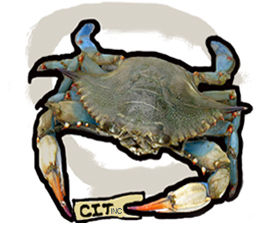 The blue crab (Callinectes sapidus) is a member of an order of crustaceans called Brachyura. Blue crabs are found in many places around the world, but this type of crab is native to countries on the western edge of the Atlantic Ocean. Blue crabs are known to consume molluscs, small fish, plants, and even other blue crabs. Since blue crabs are omnivores, their diet includes nearly anything they can get their claws on.
The blue crab (Callinectes sapidus) is a member of an order of crustaceans called Brachyura. Blue crabs are found in many places around the world, but this type of crab is native to countries on the western edge of the Atlantic Ocean. Blue crabs are known to consume molluscs, small fish, plants, and even other blue crabs. Since blue crabs are omnivores, their diet includes nearly anything they can get their claws on.
Blue Crabs are a famous cash crop of Maryland and Virginia’s Chesapeake Bay. There are many methods for harvesting blue crabs. Recreational crabbers have a variety of options for crabbing, while commercial crabbers use a trap called a “crab pot.”
Commercial crabbers sort harvested crabs into groups of Jimmies (males), Sooks (mature females), and Sallies (immature females). It may be difficult to recognize blue crab gender differences to the untrained eye, but ask any fisherman or crabber and you’ll find out how easy it can be. The abdomen or “apron” of a blue crab tells us its sex. An apron that has a shape like the US Capital Building tells us that the crab is a mature female. If the apron looks like the Washington monument then we have a male crab. However, one of the easiest ways to tell the difference between a male and female crab is to remember how female crab’s claws are like many human women’s fingernails, they’re painted red!

Comments on this entry are closed.